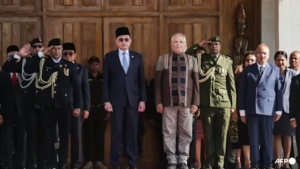Jakarta – The 2025 Global Peace Index (GPI) has been released, painting a sobering picture of rising global instability. Compiled by the Institute for Economics and Peace, this year’s index reflects a continued decline in peace metrics across the world. For Indonesia, the news is especially stark: the nation has dropped to 151st out of 163 ranked countries.
The report underscores an alarming trend—94 countries saw their peace levels deteriorate, while only 66 registered improvement. Since 2008, global peace has declined by an average of 5.4%, with 17 of 23 peace indicators worsening.
The top five most peaceful countries remain in Europe and the Pacific. Iceland retains its top ranking for the 18th consecutive year, thanks to its low crime rate, cohesive society, and strong social systems. Ireland, New Zealand, Austria, and Switzerland follow closely.
Singapore, however, stands out regionally. Ranked 6th globally, it is the only Southeast Asian country in the top ten. Its consistent internal stability, economic resilience, and strategic defense spending are noted as key contributors to its ascent. Despite military expenditures, these are framed within the context of securing maritime trade routes vital to its economy.
In stark contrast, Indonesia’s fall to 151st signals systemic challenges. High levels of internal unrest, political volatility, and uneven law enforcement are cited among contributing factors. The report also highlights broader regional fragilities across South and Southeast Asia, with conflicts in Myanmar, Thailand’s southern provinces, and insurgencies elsewhere adding to the regional tension index.
The report quantifies the global economic cost of violence in 2024 at nearly USD 20 trillion—approximately 11.5% of the world’s GDP or USD 2,400 per person. Notably, military expenditure accounts for almost half of this figure, while peacebuilding receives a mere 0.5%.
Currently, 59 armed conflicts are active globally—an all-time high since World War II. Moreover, 98 countries have been involved in cross-border conflicts in the past five years, reflecting an increasingly interconnected and volatile security landscape.
Forced displacement has surged, with 122 million refugees worldwide. Seventeen nations now have over 5% of their population living as refugees or internally displaced persons. Countries like Sudan, South Sudan, Yemen, Ukraine, and Russia occupy the lowest ranks in the GPI.
Despite the bleak global outlook, the report emphasizes the correlation between peace and prosperity. Peaceful countries consistently report higher GDP per capita, greater investor confidence, and stronger public health outcomes. Portugal, Denmark, Slovenia, and Finland round out the top 10 list, each with unique strategies in governance, social welfare, and conflict mitigation.
The latest findings of the GPI offer a clear signal: peace is no longer a given, even in historically stable regions. For nations like Indonesia, the data underscores the urgent need for policy realignment—prioritizing rule of law, community trust-building, and inclusive development as prerequisites for national resilience.
As global dynamics continue to shift, the gap between the most and least peaceful nations appears to widen. For the ASEAN region, Singapore’s model provides a benchmark, while Indonesia’s ranking serves as a call to action.









